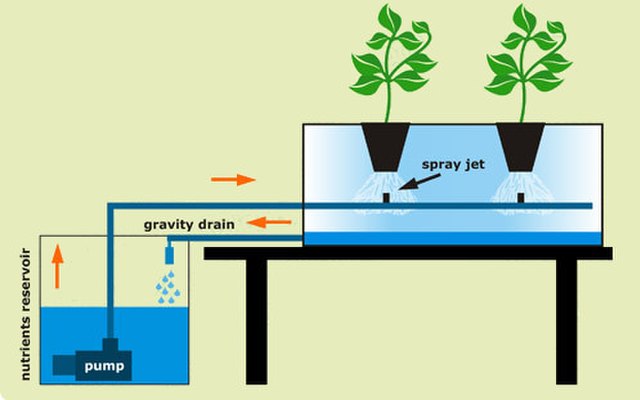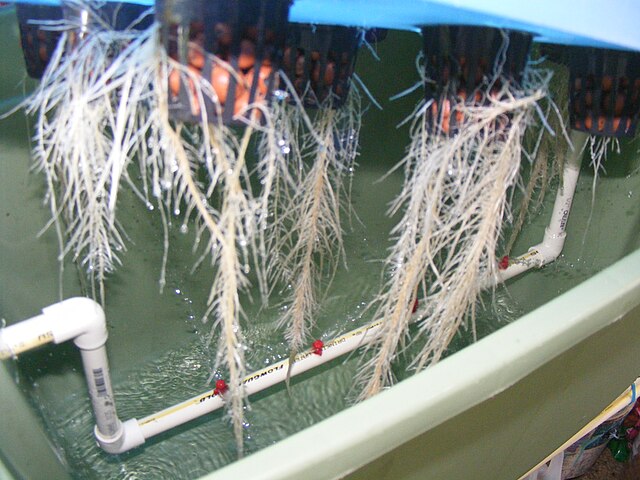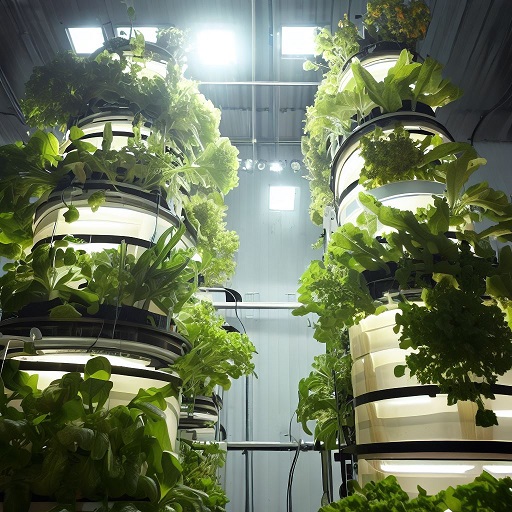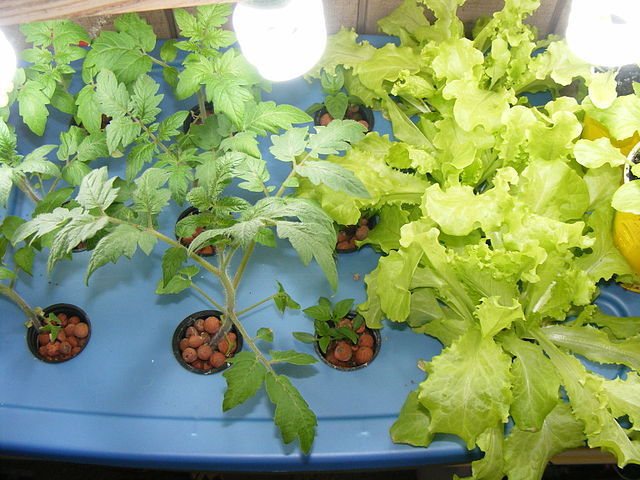Aeroponics: A Revolutionary Approach to Sustainable Farming
Aeroponics – A Beginners Guide
Table of Contents
- Introduction
- What is Aeroponics?
- Mechanics of Aeroponic Food Production
- Costs Involved
- Benefits of Aeroponics
- Problems and Challenges
- Aeroponics vs Traditional Hydroponics
- Crops Particularly Benefited in the USA
- Conclusion
- References
Introduction
Welcome to the exciting world of aeroponics—a revolutionary method of growing plants that promises higher yields, faster growth, and a more sustainable future for food production. If you’re an amateur gardener, small-scale farmer, or simply someone intrigued by innovative farming techniques, you’ve landed on the perfect guide.
In this comprehensive article, we’ll delve into the mechanics of aeroponic food production, giving you an in-depth understanding of how it works. We’ll also evaluate the costs involved, so you can determine if this system fits within your budget. Aeroponics isn’t just about fascinating technology; it also has practical advantages. We’ll explore the benefits of aeroponics and how it compares to traditional hydroponic systems, as well as some challenges you might face.
To top it all off, we’ll look at specific crops that thrive in aeroponic systems, especially focusing on varieties that are particularly well-suited for growing in the USA.
So, let’s embark on this aeroponic journey together, shall we?
What is Aeroponics?
You’ve probably heard of hydroponics, where plants are grown in a nutrient-rich water solution rather than soil. But what about aeroponics? The term may sound like it belongs in a sci-fi movie, but it’s a reality that’s transforming the way we think about agriculture.
Defining Aeroponics
Aeroponics is a soil-less growing method in which plant roots are suspended in air and misted with nutrient-rich water. Unlike hydroponics, which submerges roots in a nutrient solution, aeroponics allows the roots to breathe more freely, facilitating better nutrient absorption and faster growth. The word “aeroponic” is derived from the Greek words ‘aero-‘ meaning air, and ‘ponos’ meaning labor, essentially encapsulating the concept of “air work.”
The Technology Behind Aeroponics
The genius behind aeroponics lies in its efficient use of resources. A specialized pump mist-sprays the plant roots with a nutrient solution at regular intervals, providing the essential elements they need to grow. The droplet size is carefully calibrated to maximize nutrient uptake, while a timer controls the misting frequency to prevent root rot and other diseases.

In summary, aeroponics is an advanced yet approachable method of soil-less growing that offers an array of advantages, from quicker harvest cycles to more sustainable resource use. It’s a fascinating intersection of biology, technology, and sustainability, and it’s accessible to gardeners and farmers of all levels.
Mechanics of Aeroponic Food Production
If you’re intrigued by the concept of aeroponics and wondering how it all works, you’re in the right place. In this section, we’ll break down the essential components and processes that make aeroponic food production not just possible, but highly efficient.
Components of an Aeroponic System
To understand how aeroponics works, it’s crucial to become familiar with its primary components:
Reservoir
This is where the nutrient-rich water solution is stored. The reservoir is connected to a pump that sends the solution to the roots via spray nozzles.
Pump
The pump is the heart of the aeroponic system, responsible for circulating the nutrient solution from the reservoir to the plants.
Spray Nozzles
These are strategically placed to mist the plant roots with the nutrient solution. The droplet size and spray pattern are calibrated for optimal nutrient uptake.
Plant Holders
These structures hold the plants in place, ensuring that their roots are exposed to the nutrient mist. The design often allows for easy access to the roots for monitoring and maintenance.

View of plant roots in aeroponics system
Nutrient Solution
A mixture of water and essential plant nutrients, the solution is what feeds the plants, promoting growth and development.
The Aeroponic Process
Now, let’s look at how these components work together in a typical aeroponic cycle:
- Spraying: The pump activates, sending the nutrient solution through the spray nozzles.
- Oxygenation: As the mist settles, the roots absorb both the nutrients and the surrounding oxygen, a key element for plant growth.
- Nutrient Uptake: The fine mist allows for excellent absorption of nutrients, promoting faster growth and healthier plants.
Setting Up Your Own Aeroponic System
Whether you’re a DIY enthusiast or prefer a plug-and-play solution, there are options for you:
- DIY Systems: These are often less expensive but require a good understanding of the mechanics involved. You’ll need to purchase pumps, nozzles, and other components separately.
- Commercial Systems: These are ready-to-use setups that come with everything you need, making them ideal for beginners or those who prefer a hassle-free experience.
Either way, setting up an aeroponic system is a rewarding project that pays off with superior plant growth and quality.
With a grasp of these mechanics, you’re well on your way to understanding the fascinating world of aeroponics. Up next, we’ll dive into the costs involved in setting up and maintaining an aeroponic system.
Costs Involved
So you’re sold on the idea of aeroponics and can’t wait to dive in, but what about the financial aspect? Setting up and maintaining an aeroponic system does involve some costs, and it’s important to understand these before you take the plunge. Let’s break it down.
Initial Setup Costs
The first and most obvious expense is the initial setup. Depending on whether you’re going the DIY route or opting for a commercial system, the costs can vary significantly.
Equipment
- Reservoir: Around $50 – $100
- Pump: Approximately $40 – $100
- Spray Nozzles: $10 – $20 per nozzle
- Plant Holders: $20 – $50 depending on material and size
- Lighting (if indoor): $50 – $300 depending on quality and coverage
Nutrient Solutions
A quality nutrient solution can cost between $20 and $50 for a gallon, which can last for several weeks depending on the size of your system.
Ongoing Costs
After the initial setup, there are some recurring expenses to consider:
Electricity
The pump and, if applicable, indoor lighting will consume electricity. Depending on your local rates, this can add an extra $10 – $30 to your monthly bills.
Maintenance
Parts may wear out or break down over time, requiring replacement. Budget around $50 – $100 per year for general maintenance.
Cost Comparison with Traditional Hydroponics
When compared to traditional hydroponics, aeroponics often has a higher initial setup cost due to the specialized equipment like fine mist nozzles. However, the ongoing costs can be lower due to reduced water and nutrient usage, potentially offsetting the initial investment over time.
Understanding the costs involved will help you make an informed decision about whether aeroponics is the right choice for you. With this knowledge in hand, you’ll be better prepared to plan your budget and get your system up and running.
Benefits of Aeroponics
You’ve learned about the mechanics and the costs, but what about the rewards? Aeroponics isn’t just a trendy buzzword; it’s a method that offers tangible advantages over traditional growing techniques. Whether you’re an amateur gardener or a small-scale farmer, here’s why you might want to consider going the aeroponic route.
Faster Growth Rates
One of the most enticing benefits of aeroponics is the accelerated growth of plants. Because roots are exposed to more oxygen and can absorb nutrients more efficiently, plants often grow at a much faster rate compared to soil-based or even hydroponic systems. According to NASA, plants grow up to three times faster in aeroponic growing systems than in soil. On the other hand, hydroponically grown plants grow 30 to 50% faster than soil-grown plants. Both aeroponic and hydroponic systems compare favorably to traditional soil-based plant growing.
Lower Water Usage
Aeroponics is incredibly water-efficient. The misting system delivers just enough moisture to the roots, minimizing waste. Some reports suggest that aeroponics can use up to 95% less water than traditional soil farming and about 40% less than hydroponics.
Easier Sterilization and Lower Risk of Disease
The design of aeroponic systems allows for easier sterilization of components, reducing the risk of plant diseases. The absence of soil also eliminates soil-borne pests and diseases, making it easier to maintain a healthy growing environment.
Space Efficiency
Aeroponic systems are generally compact and can be stacked vertically, making them ideal for urban settings or any situation where space is at a premium. This makes it possible to grow more plants in a smaller area, increasing yield per square foot. Indeed the aeroponic systems are often called “grow towers”.

Tower aeroponics system
As you can see, aeroponics offers a slew of benefits that make it an attractive option for anyone interested in efficient and sustainable growing methods. Whether you’re focused on maximizing yield, conserving water, or simply experimenting with cutting-edge gardening technology, aeroponics has something to offer.
Problems and Challenges
While aeroponics boasts a multitude of benefits, it’s essential to consider the challenges and problems you may face. Understanding these obstacles can help you prepare better and make your aeroponic journey smoother. Here’s what you should know:
Complexity of System Management
An aeroponic system’s success hinges on the precise management of various components, from the misting schedule to nutrient concentrations. Even slight imbalances can adversely affect plant health, making it a method that requires careful monitoring and adjustments.
Risk of System Failure
In aeroponics, your plants are entirely dependent on the automated systems to receive nutrients and water. A pump failure or nozzle clogging could lead to rapid plant stress or even death if not addressed promptly. This risk makes it crucial to regularly check the system’s components and perhaps even have backup systems in place.
Nutrient Management
While the misting system allows for efficient nutrient uptake, it can also lead to nutrient imbalances if not properly managed. Over-nutrition or under-nutrition can occur, requiring you to closely monitor nutrient levels and adjust the solution as needed.
Initial Learning Curve
If you’re new to soilless growing methods, aeroponics might present a steep learning curve. From understanding the mechanics to managing the system, you’ll need to invest time and effort into mastering various aspects of aeroponic growing.
By being aware of these potential challenges, you can take proactive steps to mitigate risks and ensure the success of your aeroponic system. With proper planning and ongoing attention, most of these challenges can be overcome, allowing you to enjoy the numerous benefits that aeroponics has to offer.
Aeroponics vs Traditional Hydroponics
If you’re on the fence about whether to choose aeroponics or stick with the more familiar hydroponics, this section is for you. Both methods have their merits, but they also have unique features that might make one more suitable for your specific needs than the other. Let’s delve into the key differences:
Nutrient Uptake
- Aeroponics: Offers superior nutrient uptake due to the misting system that sprays nutrient-rich droplets directly onto the roots.
- Hydroponics: Efficient but generally less so than aeroponics, as the roots are submerged in the nutrient solution, which may limit oxygen uptake.
Space Utilization
- Aeroponics: Highly space-efficient, allowing for vertical stacking and higher plant density.
- Hydroponics: Requires more horizontal space and generally less suited for vertical farming.
Cost
- Aeroponics: Often has a higher initial setup cost but can be more cost-effective in the long run due to lower water and nutrient needs.
- Hydroponics: Typically cheaper to set up but may involve higher ongoing costs, especially for water and nutrients.
Complexity
- Aeroponics: Requires more precise control and monitoring, making it somewhat complex for beginners.
- Hydroponics: Generally simpler to manage, making it more beginner-friendly but potentially less efficient for advanced growers.
| Criteria | Aeroponics | Traditional Hydroponics |
|---|---|---|
| Nutrient Uptake | Superior due to direct misting on roots. | Efficient but generally less so than aeroponics. |
| Space Utilization | Highly space-efficient; suitable for vertical farming | Requires more horizontal space; less vertical. |
| Cost | Higher initial cost but lower ongoing expenses. | Lower initial cost but potentially higher ongoing expenses. |
| Complexity | More complex; requires precise control. | Simpler to manage; more beginner-friendly. |
Choosing between aeroponics and traditional hydroponics depends on your specific needs, level of expertise, and what you hope to achieve with your growing system. Each has its own set of advantages and challenges, so consider what matters most to you as you make your decision.
Crops Particularly Benefited in the USA
So, you’re almost sold on the idea of aeroponics, but you’re wondering, “What can I grow?” The good news is, aeroponics is versatile, and many plants thrive in this type of system. However, some crops are especially well-suited for aeroponic growing methods, particularly when applied in the United States. Here’s a rundown:
Leafy Greens
- Lettuce: A quick-growing crop, ideal for aeroponic systems.
- Kale: Benefits from the efficient nutrient uptake in aeroponics.
- Spinach: Another fast grower that thrives in high-oxygen environments.
Herbs
- Basil: Loves the quick nutrient uptake and grows exceptionally well.
- Cilantro: Grows faster and tends to be more aromatic in aeroponic systems.
- Mint: Thrives in aeroponics due to its preference for well-aerated root zones.
Fruits
- Strawberries: Can be grown more efficiently in vertical aeroponic systems, making them ideal for space-limited areas.
- Tomatoes: While challenging, small tomato varieties like cherry tomatoes can succeed in aeroponic systems.
Specialty Crops
- Medicinal Plants: Many medicinal herbs like lavender and chamomile respond well to the controlled environment of aeroponics.
- Exotic Plants: Some exotic plants that are hard to grow in soil thrive in the controlled conditions of an aeroponic system.

Aeroponically grown lettuce and tomato
Whether you’re interested in growing fresh herbs for your kitchen, cultivating your own fruits, or experimenting with specialty plants, aeroponics offers a versatile platform for a variety of plants. Specifically, the crops mentioned above are particularly benefited when grown aeroponically in the USA, making them excellent choices for your first aeroponic adventure.
Conclusion
Congratulations, you’ve journeyed through the fascinating landscape of aeroponics! From its cutting-edge technology to its practical benefits and challenges, aeroponics offers a compelling alternative to traditional growing methods. As we’ve seen, this innovative approach to agriculture holds promise for faster growth rates, efficient use of space, and sustainable resource management.
Whether you’re an amateur gardener, a small-scale farmer, or someone simply interested in sustainable food production, aeroponics presents an exciting avenue to explore. It may have its complexities and initial costs, but the long-term benefits often outweigh the challenges, especially if you’re committed to mastering the craft.
If you’re based in the USA, you have the added advantage of a variety of crops that are particularly well-suited to aeroponic methods. From leafy greens and herbs to fruits and specialty crops, the options are plentiful.
As you contemplate diving into aeroponics, consider what you hope to achieve, whether it’s maximizing yield, experimenting with unique crops, or contributing to a more sustainable future. With proper planning, research, and a bit of adventurous spirit, you can turn your aeroponic aspirations into a thriving reality.
Thank you for joining us on this exploratory journey into the world of aeroponics. We hope this comprehensive guide has armed you with the knowledge and inspiration you need to take your next steps.
Ready to give aeroponics a try? The sky—or perhaps, the ceiling—is the limit!
References
- “Aeroponics: A Sustainable Alternative to Conventional Agriculture Methods,” Journal of Sustainable Agriculture
- “Efficiency of Aeroponic Systems in Urban Agriculture,” Urban Farming Today
- “Comparative Study of Hydroponics and Aeroponics,” Agricultural Engineering International
- Aeroponics: A Revolutionary Approach to Sustainable Farming
- 5 Budget Fridges For Storing Microgreens
- Maximizing Freshness: How To Store Microgreens Correctly
- How To Grow Watercress Without Soil: A Hydroponic Guide
- Exploring the Best Outdoor Grow Tents for Hydroponics
- How To Choose A Hydroponic Pump
- 10 Best Places To Buy Microgreen Seeds for Your Garden
- Prepare Your Hydroponic Garden for Winter: Essential Tips
- Your Guide on How To Choose A Hydroponic Reservoir Size